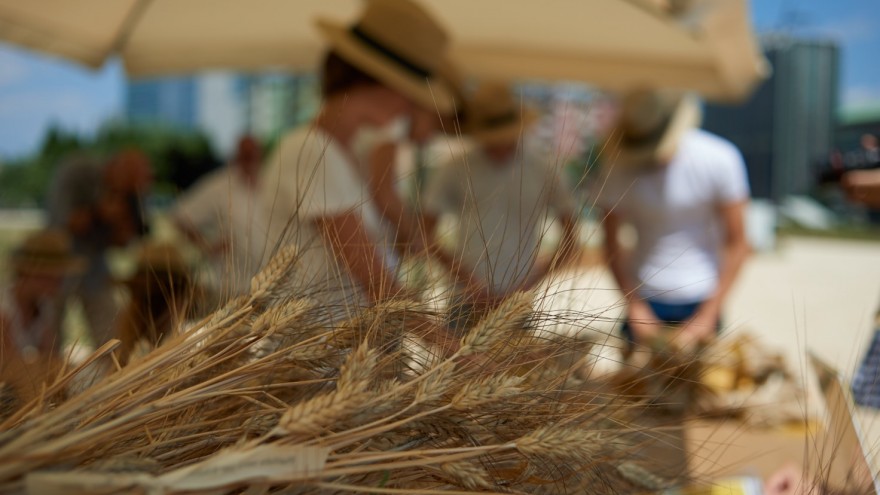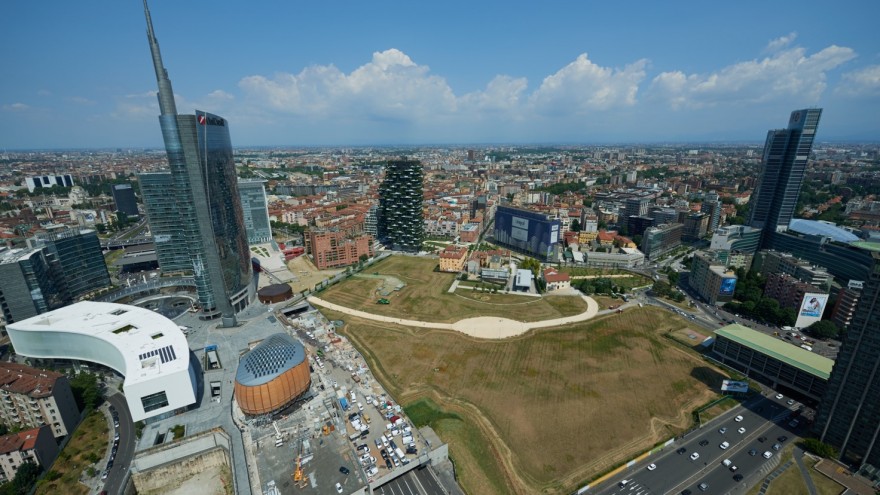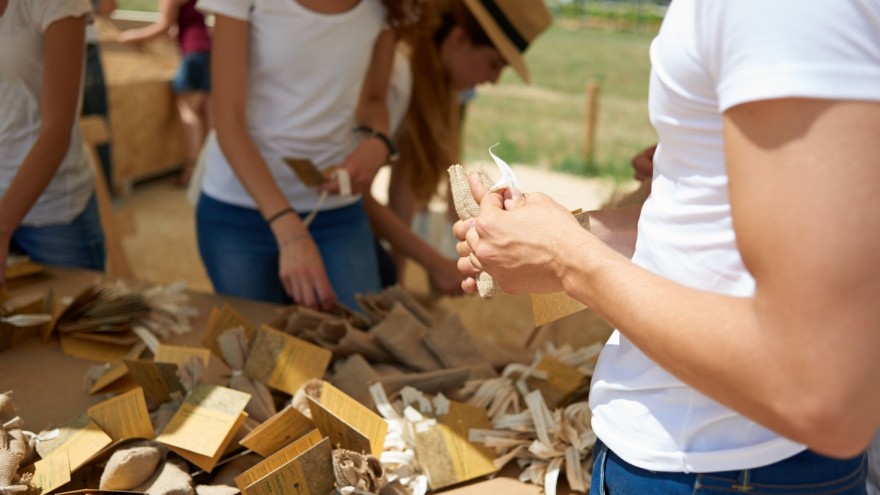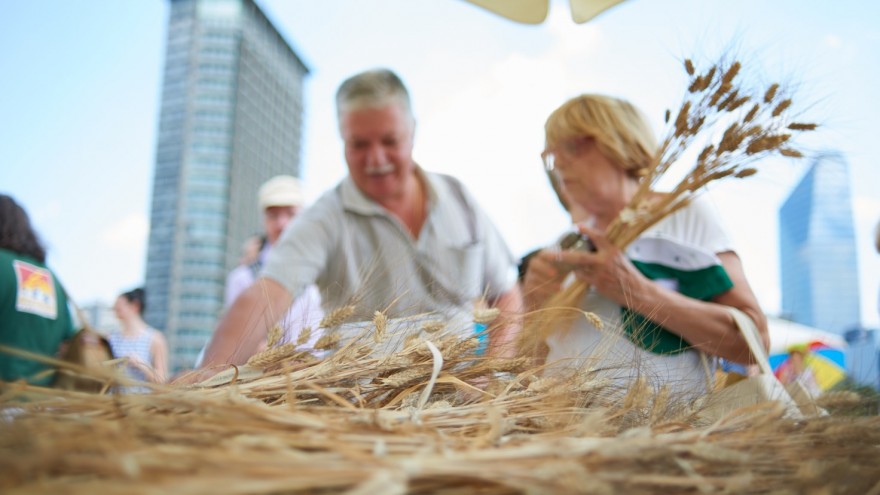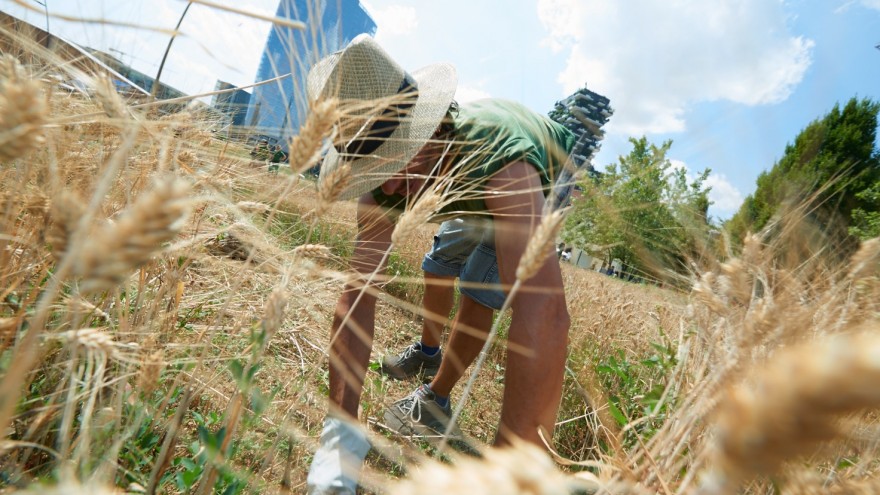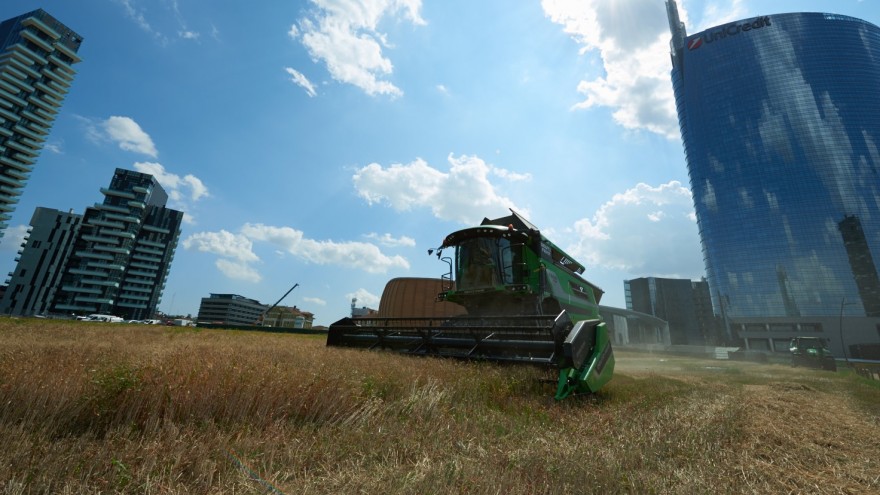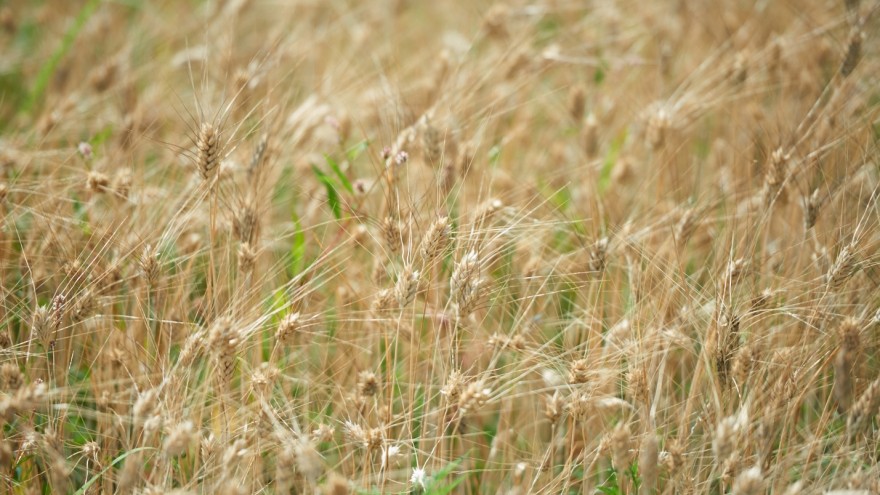In 1982 American artist Agnes Denes planted a four acre field of wheat in Lower Manhattan, New York, a plot now known as Battery Park. The piece, Wheatfield, stood as a powerful protest against the squandering of natural resources and our destructive impact on the earth.
Fast forward to Milan, 2015. In February city planning group Fondazione Riccardo Catella replicated the Wheatfield earthwork in downtown Milan in partnership with contemporary culture initiative Fondazione Nicola Trussardi and Italian agriculture organisation Confagricoltura. Members of the public were invited to sow seeds across 12 acres of land in the Porta Nuova district as part of an urban renewal plan to reshape the city’s skyline.
Six months later the field, which will later be transformed into a public park, has brought everyone together to share in the reaping of the wheat and the message it supports.
The project was curated by Fondazione Nicola Trussardi’s artistic director Massimiliano Gioni and overseen by Agnes Denes herself. The environmental installation is a powerful but silent symbol of the consequences we face in a rapidly developing world, with just as much significance now as it had in the 80s.
Regardless of the metropolis it intrudes on, Wheatfield demands attention and remains a relevant work of art that can be interpretated in many ways by many different people. This is Fondazione Nicola Trussardi’s perspective:
“Nature reclaims the city through a simple, yet compellingly ecological image: a wheat field grows in the heart of Milan, in the shadow of the city skyscrapers, and once again becomes the still point of our daily lives.”

